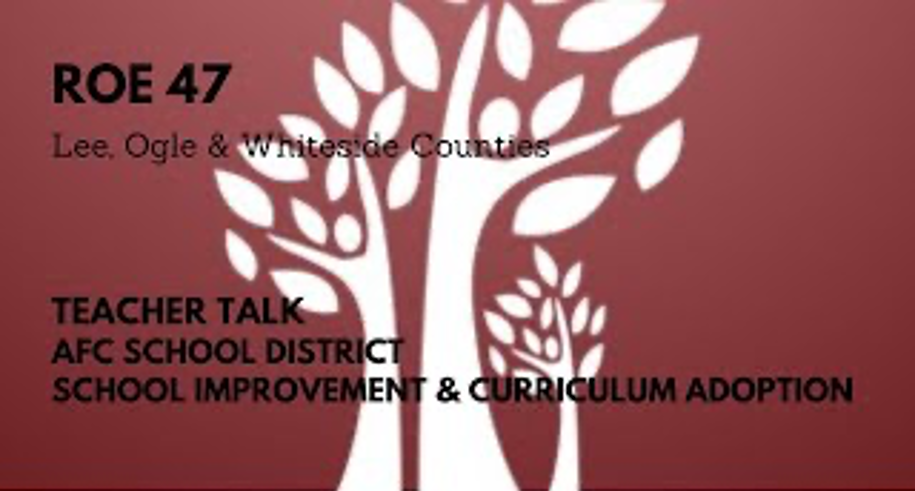Four Steps to a Successful Curricular Resource Adoption
By Krista Peterson
With the abundance and depth of knowledge gaps created over the pandemic years, many educators are turning to new curricular resources to help meet students’ diverse needs. However, there is much to consider before choosing a resource. Per the company Education Elements, “Curriculum selection is no longer about textbook adoptions that happen every few years. Districts today are developing a strategy for instructional materials adoption and selection that takes into account district goals, pedagogical shifts, cultural relevance, and student-centered environments.” But before jumping into something new, let’s take a step back, and consider these four steps to help guide our curriculum decisions, focusing on mathematics resources.
Step 1. Shared vision and beliefs about math teaching and learning
After several years of living in “survival mode,” it’s time to pause and recenter our vision and beliefs about teaching and learning. This begins by bringing all stakeholders to the table and by providing extensive professional learning surrounding research-based, high-quality strategies and practices. The stakeholders must bring the shared knowledge into a conversation and come to a consensus about beliefs around math instruction, the most integral of which should be that ALL children can learn! Other beliefs may include:
- Math instruction should be accessible to ALL
- Math instruction should be equitable for ALL
- Math instruction should be learner-centered
- Math instruction should offer approaches that address multiple learning styles
- Math instruction should utilize manipulatives and hands-on experiences
- Math instruction should incorporate conceptual, procedural, and application processes
- Math instruction should provide rich math tasks and apply to real life
These beliefs are consistent with the Math for All approach that I experienced throughout a week-long professional learning opportunity. I was then able to see the power of these shared beliefs as I supported districts in a two-year Math for All implementation model. The collective efficacy shared by all stakeholders ensured that every student was given access to the math instruction by providing various entry points into the learning tasks. Students were then asked to share how they worked through the task, creating opportunities to share multiple perspectives and strategies. Shared beliefs provide a pathway to student success!
Step 2. Evaluation of current math curriculum
Once a shared vision and common beliefs are established, it is important to evaluate the current math curriculum. The terms “curriculum” and “curricular resources” often are used interchangeably. However, curriculum is not just the curricular resources being used, it is the district-wide math system that flows down to the classroom. This system includes math personnel, master schedules, horizontal and vertical priority standards, interventions, special education models, resources and materials, and so on. Before choosing a new curricular resource, take time to evaluate the current district-wide curriculum.
This Curriculum Evaluation Tool, created by the Illinois State Board of Education (ISBE), can be downloaded and focuses on the following three areas:
- The first area looks for equity within the curriculum. Are the curricular resources developmentally appropriate? Are they culturally responsive? Do they allow for appropriate accommodations for diverse learners?
- The second area evaluates assessment. Are assessments aligned to standards? Do they reflect the rigor and complexity of the standards? Do they allow multiple ways to demonstrate and collect student growth?
- The third area determines the effectiveness of implementation. Has there been proper professional learning for educators? Is student data used to make decisions? Is there parent and community input? Has digital learning been considered?
Utilizing this tool promotes conversation among stakeholders about the strengths and weaknesses within the current curriculum. This knowledge provides a lens to begin the new curricular resource adoption process.
Step 3. Define the curricular resource adoption process
When a district has identified the need for a new curricular resource, the next step is to lay out an adoption process. First, parameters must be set. These include the following:
- Who will be involved in the process? What are the roles and responsibilities?
- What is the timeline for adoption?
- What is the budget?
- Are there any technology needs?
- What is the decision-making process for choosing a resource?
Establishing these important parameters up front will ensure all stakeholders know what is expected of them and provide order to the process.
Step 4. Creating a successful curricular resource pilot
Now that there is a plan in place for adoption, it’s time to start the piloting process. Piloting, when done with intentionality, can take a full school year. Listen to these principals share their resource adoption experience HERE, starting about 13 minutes in. As you’ll hear in the interview, the timeline they used for their pilot and resource adoption looked like this:

Summer |
Establish beliefs and values around math. Determine goals for resource selection (see Step 1, above). Determine timeline, personnel, technology, and budget (see Step 3, above). |
September |
Professional learning on utilizing curricular resource evaluation tools, such as DESE, Ed Reports, and Louisiana Believes, to identify resources that score highly in focus and coherence, rigor and mathematical practices, and usability. This is a very important step, as it ensures starting with the best resources. “All students deserve high-quality materials. Less than 20 percent of the materials in use in classrooms are aligned to standards” (EdReports, 2023). |
October |
Time to review resources that score high in these three areas, keeping in the forefront the district’s established vision and beliefs. Choose three to four resources to get samples to review. |
November |
Choose two resources to pilot in the spring. |
December |
Professional learning on the first pilot resource. Provide time for educators to plan together, prepare materials, and feel confident in the resource. This is also an important time to remind educators that this is hard work, and that every lesson won’t be perfect. It will take time to get into the routine and learn the language and models being used. That’s OK! |
January |
Pilot one full unit in the first resource. Meet weekly to provide feedback on strengths and challenges. Perform learning walks so educators can see the unit being implemented by their colleagues. At the end of the unit, use a rubric to evaluate all areas of the resource. |
February |
Repeat the process with the second resource. |
March |
Compile rubric scores from both resources. Have candid discussions with all stakeholders about the experience. Identify the resource to adopt. |
April |
Recommend the curricular resource to the school board. |
May and Summer |
Provide professional learning that may be needed for implementation in the fall. |
This was a long and sometimes arduous process, with all the teachers involved in some fashion. Establishing a set of values and beliefs and then going through a collaborative decision-making process was sometimes difficult and even a bit rocky. Opinions differed. Ideas had to be tested in the classroom. However, in the end, all stakeholders felt heard and had come to trust each other, the collaborative process, and the choice they made. Many teachers commented on a deeper connection they felt to each other, and the sense that they now have a common vision with common goals to which they can refer as the implementation of the new program progresses with its inevitable bumps in the road.
We know that “[c]urriculum is a key lever in providing meaningful learning experiences for students, a driver for equity, and clarifying instructional leadership and staff development opportunities” (Education Elements, 2023). As we embark on these post-pandemic years, we may see many gaps and diverse needs within our students. Taking the time to choose and implement a strong, collaboratively chosen, and well-understood curriculum will help us not only to meet the students’ needs, but to help them grow and thrive!
Bibliography
EdReports. (2023). Selecting for quality: 6 key adoption steps.
Education Elements. (2023). Curriculum adoption & strategy.
Student Achievement Partners. (2020, April 3). What to consider if you’re adopting a new ELA/literacy curriculum. Peers and Pedagogy.
Teacher Talk—AFC School District (2023, May 3). School improvement and curriculum adoption [Video].
The contents of this blog post were developed under a grant from the Department of Education. However, those contents do not necessarily represent the policy of the Department of Education, and you should not assume endorsement by the Federal Government.
This work is licensed under CC BY-NC-SA 4.0
Math for All is a professional development program that brings general and special education teachers together to enhance their skills in
planning and adapting mathematics lessons to ensure that all students achieve high-quality learning outcomes in mathematics.

